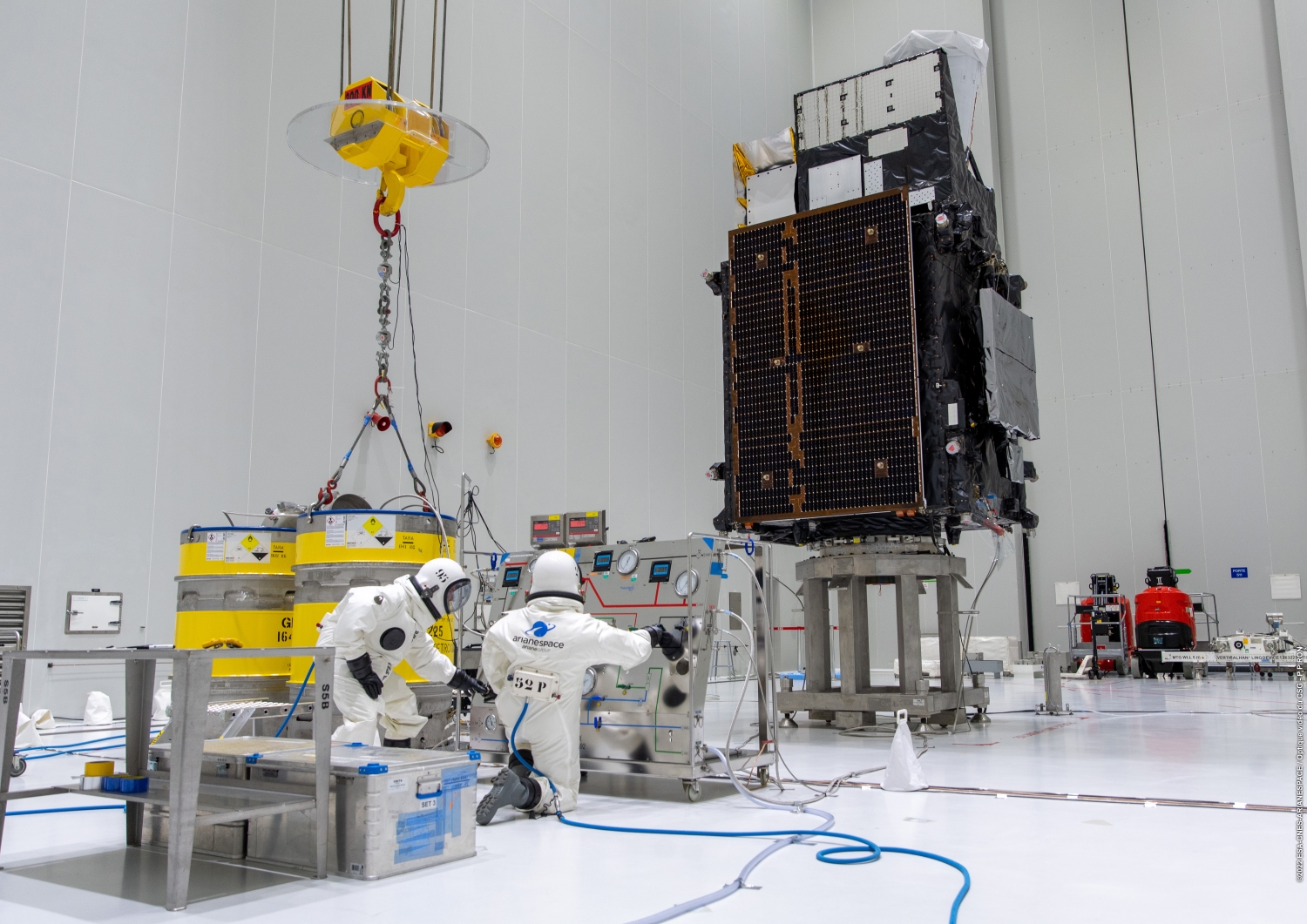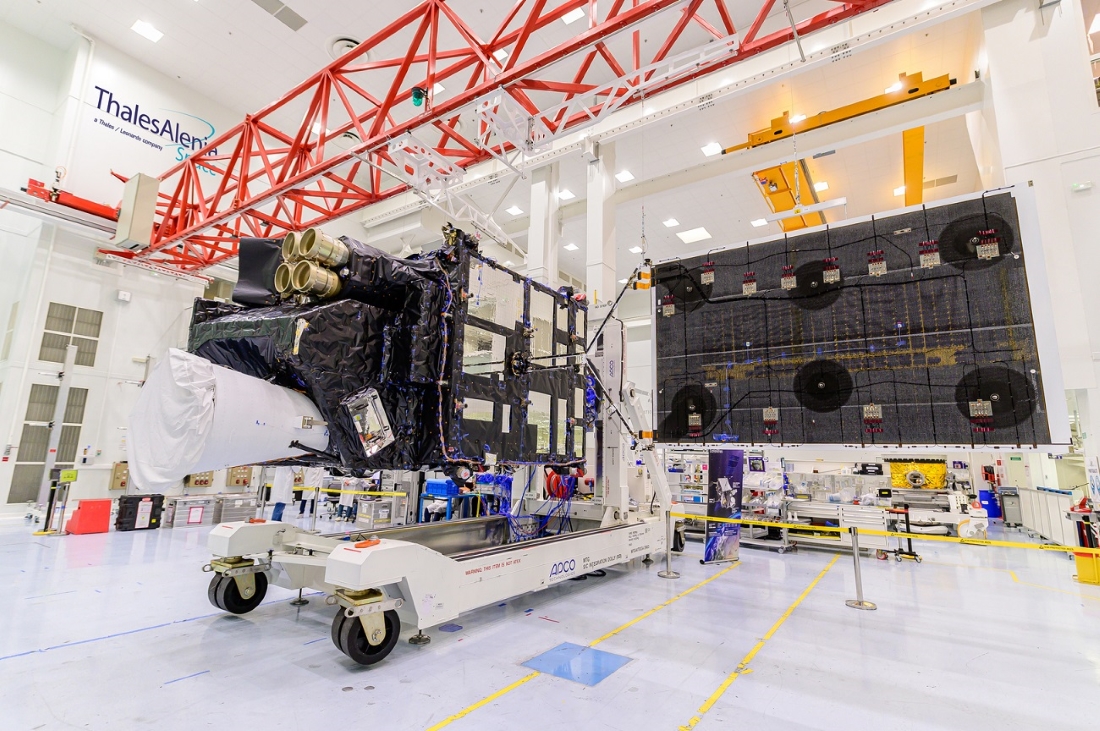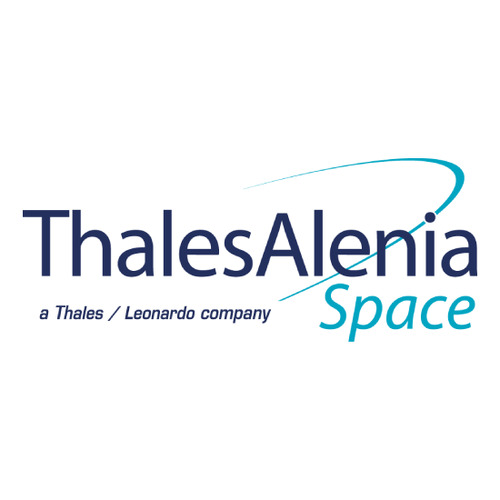Final pre-launch preparations for the first Meteosat Third Generation (MTG) satellite are underway in Europe’s spaceport, in French Guiana. The satellite standalone tests have successfully been completed and the spacecraft has been fueled for flight, allowing the start of combined operations with its co-passenger and the A5 launcher.
The first Meteosat Third Generation satellite, an imaging version dubbed MTG-I1, was built by a European consortium led by Thales Alenia Space as prime contractor. It features two imagers: an advanced flexible combined imager (FCI) and a lightning imager (LI). The impressive FCI provides a full image of the Earth every 10 minutes (versus 15 minutes for the previous generation) and includes a fast mode capable of providing images of Europe every 2.5 minutes. With a spatial resolution of 0.5 to 1 km, the satellite will improve the reliability of weather forecasts over a timescale of minutes to hours.
The lightning imager, the first of its kind in Europe, enables the early detection of storms and extreme weather events, while also improving aviation safety.
The MTG program comprises six satellites: four imaging and two atmospheric sounding models, with images updated every ten minutes. They will operate in two fleets of three geostationary satellites, with two imagers and one sounder. A three-axis stabilized platform means consistent coverage since this type of system keeps its sights firmly fixed on Earth.
A revolution in Earth observation

The first Meteosat was launched in 1977. This third generation will be the most advanced yet, with improved image resolution and near real-time data delivered to users, for “nowcasting” of fast-developing weather events.
Nowcasting means virtually real-time weather forecasts for greater accuracy, along with key information on extreme weather events.
Making meteorology more accurate

Meteorologists have called on the rich data harvest from Meteosat satellites for over 45 years – and Thales Alenia Space has built all geostationary European meteorological satellites as prime contractor since the beginning.
The MTG-I1’s sophisticated lightning imager was developed by Leonardo in Italy. Consisting of four cameras, it will be able to detect cloud-to-cloud and cloud-to-ground flashes day or night and under all conditions. This unique instrument will further our knowledge of how lightning is generated and improve emergency warnings as well as weather nowcasting, traffic control safety and climate change awareness.
The two atmospheric sounding satellites will introduce a new technology to provide 3D maps of the atmosphere – a world first. The sounders will enable detection of severe weather events half a day ahead. Weather forecasters can count on the entire system to improve their forecasts, even up to eight days ahead – a big step forward in giving people early warning of major events. MTG will help save lives while paving the way for new kinds of services across Europe and Africa. Once the entire MTG fleet is in orbit, Eumetsat will have the best weather services in the world.
A lifesaving satellite

Predicting extreme weather events, which have become more frequent and more dangerous due to climate change, can make a difference and save lives.
When fully operational, the MTG system will generate 50 times the data volume provided by the second-generation system. According to the European Environment Agency, weather and climate-related events caused economic losses in Europe of approximately 520 billion euros between 1980 and 2020, as well as 145,000 deaths.
Climate change is more than ever a key issue, since the greenhouse gases already in the atmosphere will fuel rising temperatures for several centuries to come.
Satellites play a vital role in our determined efforts to curb climate change, but it’s still up to authorities and citizens to take the actions that have the most impact.
Looking forward to the launch, stay tuned!
Illustrations: © ESA-CNES-Arianespace - © Thales Alenia Space/Imag[IN] - © Thales Alenia Space


